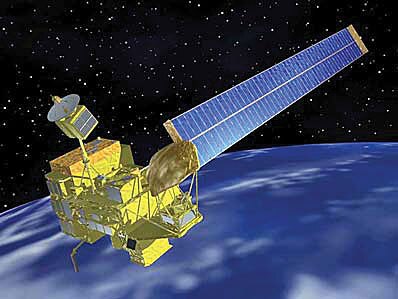When dust slams into spacecraft
DOI: 10.1063/PT.3.1971
Low Earth orbit abounds in dust particles whose masses are less than 1 microgram and whose speeds lie in the range of 10–100 km/s. Although the particles’ momenta are typically too low to imperil spacecraft, the dust poses a potentially more dangerous threat. When high-speed particles slam into a spacecraft, the impacts kick up clouds of plasma. As the clouds expand, they oscillate and emit radio waves that could conceivably disrupt or even knock out the spacecraft’s electrical equipment. To evaluate the threat, a team from Stanford University in California and Stuttgart University in Germany used a Van de Graaff accelerator to shoot a total of 6000 iron particles of various masses and impact speeds at representative spacecraft materials. To emit radio waves at significant levels, the plasma must be cool enough—and, therefore, its expansion slow enough—that it lingers in the oscillatory regime before it disperses. Those conditions did indeed prevail in the experiment. Another finding: Targets made of glass, which is used in solar panels, emitted radio waves at low impact speeds more readily than metal targets did. Whether dust-induced radio emission is a real threat is difficult to tell, but at least one spacecraft, ADEOS 2, depicted here, shut down in the dusty conditions of a meteor shower. (N. Lee et al., Phys. Plasmas 20, 032901, 2013, doi:10.1063/1.4794331

